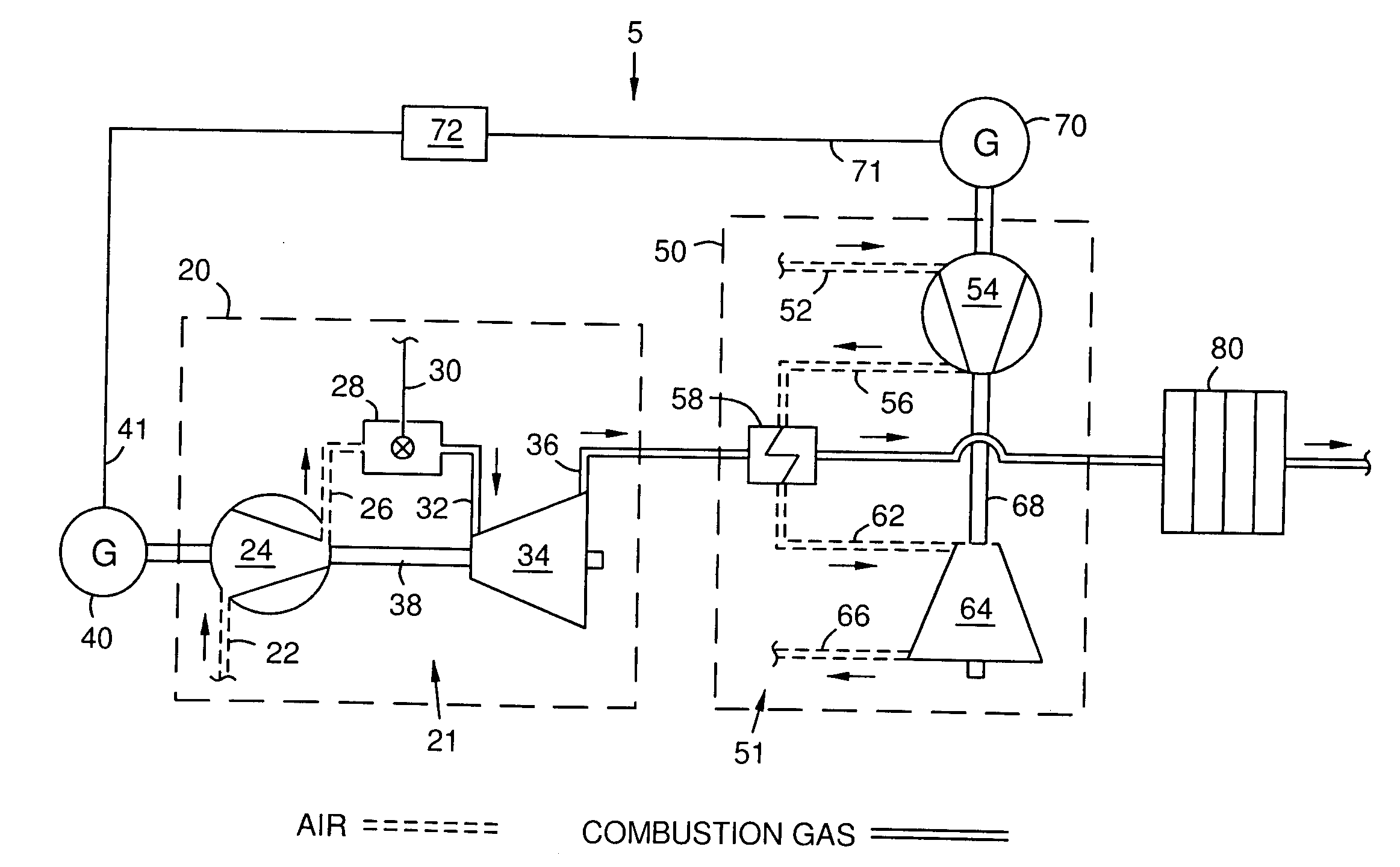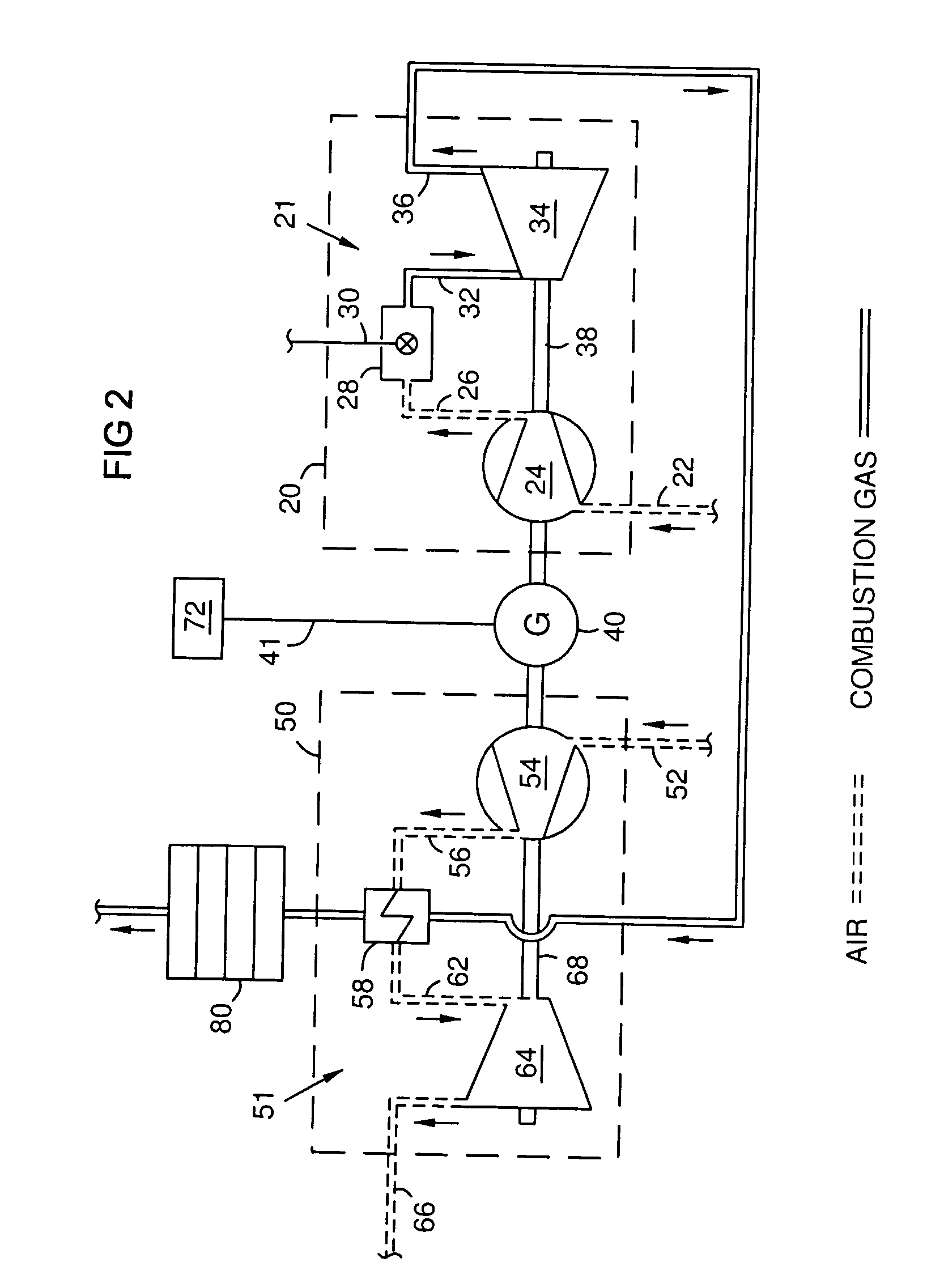Heat recovery gas turbine in combined brayton cycle power generation
a gas turbine and combined cycle technology, applied in the direction of engines, machines/engines, mechanical equipment, etc., can solve the problems of nox removal technology and inability to achieve the required low emissions,
- Summary
- Abstract
- Description
- Claims
- Application Information
AI Technical Summary
Problems solved by technology
Method used
Image
Examples
Embodiment Construction
[0008] Gas turbine engines operate on a thermodynamic Brayton cycle, in which ambient air is drawn into a compressor and pressurized. The compressed air is heated in a generally constant-pressure process in a heating chamber that is open to both inflow and outflow. This is normally done by burning fuel in the compressed air in a combustion chamber, producing a hot working gas comprising combustion gasses. The heated air is then expanded through a turbine to extract energy in the form of shaft power. FIG. 3 illustrates aspects of an illustrative Brayton cycle comprising a series of transitions 1, 2, 3, and 4 of a working gas, starting from atmospheric pressure 10, then to compression 11, combustion 12, expansion through a turbine section 13, and exhaust 14.
[0009] In accordance with an aspect of the invention FIG. 1 schematically shows a combined cycle power generator 5 comprising two cooperating Brayton cycles 20 and 50. The first Brayton cycle 20 may comprise a combustion turbine e...
PUM
 Login to View More
Login to View More Abstract
Description
Claims
Application Information
 Login to View More
Login to View More - R&D
- Intellectual Property
- Life Sciences
- Materials
- Tech Scout
- Unparalleled Data Quality
- Higher Quality Content
- 60% Fewer Hallucinations
Browse by: Latest US Patents, China's latest patents, Technical Efficacy Thesaurus, Application Domain, Technology Topic, Popular Technical Reports.
© 2025 PatSnap. All rights reserved.Legal|Privacy policy|Modern Slavery Act Transparency Statement|Sitemap|About US| Contact US: help@patsnap.com



